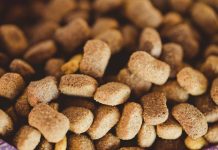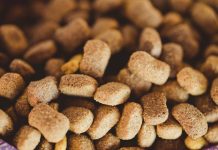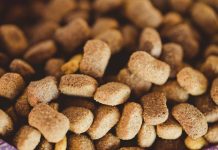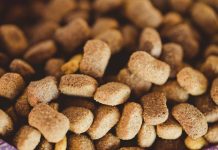Welcoming a new puppy into your home is an exciting adventure filled with wagging tails and playful antics. As you embark on this journey, ensuring your furry friend receives the best nutrition possible is a top priority. Selecting the right puppy food is crucial for their growth, energy, and overall well-being. Among the myriad of options available, protein-packed diets stand out for their ability to support healthy development and sustain those bursts of puppy energy. In this guide, we’ll walk you through the essentials of choosing high-protein puppy food, helping you make informed decisions that cater to your puppy’s unique needs. Let’s dive into the world of nutrition and discover how to fuel your little companion’s journey to a healthy and happy life.
Understanding Your Puppys Nutritional Needs
Ensuring your puppy receives the right balance of nutrients is crucial for their growth and development. One of the key components to focus on is protein, which plays a vital role in building strong muscles, supporting a healthy immune system, and providing energy. When selecting puppy food, aim for a high-quality product with a good protein content. Look for options where the first ingredient is a named meat source, such as chicken, beef, or lamb. Avoid foods that list generic terms like “meat by-products” or “animal meal” as these can be of lower quality.
- Check the Label: A reliable puppy food will typically contain at least 22% protein. This information can be found in the guaranteed analysis section on the packaging.
- Consider the Ingredients: Whole meats and meat meals (like chicken meal or fish meal) are excellent protein sources. Be cautious of foods that rely heavily on plant-based proteins, as they might not provide the complete amino acid profile your puppy needs.
- Observe Your Puppy: Pay attention to your puppy’s coat, energy levels, and overall health. These can be indicators of how well they are responding to their diet.
By focusing on these elements, you can confidently choose a protein-rich puppy food that supports your furry friend’s health and vitality as they grow into a strong and active adult dog.

Choosing High-Quality Protein Sources for Your Puppy
When selecting the best protein sources for your furry friend, it’s essential to focus on ingredients that promote growth and development. Lean meats such as chicken, turkey, and beef are excellent options, providing the necessary amino acids puppies need. Additionally, fish like salmon and trout offer not only protein but also beneficial omega-3 fatty acids for a shiny coat and healthy skin. Remember to look for foods where these meats are listed as the first ingredient, ensuring they’re the primary protein source.
Don’t forget about plant-based proteins that can complement meat sources. Ingredients such as peas, lentils, and chickpeas offer a valuable protein boost along with fiber and essential vitamins. While meat should be the primary protein, these plant-based options can provide a balanced diet. When examining the ingredient list, ensure that there are no unnecessary fillers or by-products, which can detract from the quality of the food. Opt for brands that emphasize natural and wholesome ingredients, supporting your puppy’s health and vitality as they grow.

Decoding Pet Food Labels for Protein Content
When it comes to ensuring your puppy gets the protein they need, understanding pet food labels is essential. The first step is to look at the ingredient list. Ingredients are listed in order of weight, so those appearing at the top make up the bulk of the food. Whole meats like chicken, beef, or fish should ideally be among the first few ingredients, as they provide high-quality protein. However, be cautious of terms like “meat meal” or “by-products,” which can be less desirable sources.
Pay attention to the Guaranteed Analysis section, which breaks down the nutritional content of the food. Look for a protein percentage of at least 22% for puppies, as this supports their rapid growth and development. It’s also wise to examine the AAFCO statement on the packaging. This ensures the food meets the nutritional levels established by the Association of American Feed Control Officials, indicating a balanced diet. Lastly, if your puppy has any specific dietary needs, consult your veterinarian to tailor their diet effectively.

Expert Tips for Selecting the Best Protein-Packed Puppy Food
When it comes to choosing the right food for your puppy, protein is a crucial component. To ensure you’re providing the best nutrition, consider the following tips:
- Check the Ingredients: Look for whole protein sources like chicken, beef, or fish as the first ingredient. Avoid foods with vague labels like “meat meal” or “by-products.”
- Understand Protein Needs: Puppies require more protein than adult dogs to support their rapid growth. Aim for a food with at least 22% protein content.
- Consider Breed-Specific Needs: Larger breeds might need a different protein balance compared to smaller breeds. Consult with your vet to tailor the diet to your puppy’s specific requirements.
- Look for AAFCO Approval: Ensure the food meets the standards set by the Association of American Feed Control Officials (AAFCO) for a complete and balanced diet.
By focusing on these aspects, you’ll be better equipped to choose a high-quality, protein-rich food that will support your puppy’s health and growth.
















